What constitutes a ‘document’ and how does it function?
According to the Oxford English Dictionary, the etymological origin is the Latin ‘documentum’, meaning ‘lesson, proof, instance, specimen’. As a verb, it is ‘to prove or support (something) by documentary evidence’, and ‘to provide with documents’. The online version of the OED includes a draft addition, whereby a document (as a noun) is ‘a collection of data in digital form that is considered a single item and typically has a unique filename by which it can be stored, retrieved, or transmitted (as a file, a spreadsheet, or a graphic)’. The current use of the noun ‘document’ is defined as ‘something written, inscribed, etc., which furnishes evidence or information upon any subject, as a manuscript, title-deed, tomb-stone, coin, picture, etc.’ (emphasis added).
Both ‘something’ and that first ‘etc.’ leave ample room for discussion. A document doubts whether it functions as something unique, or as something reproducible. A passport is a document, but a flyer equally so. Moreover, there is a circular reasoning: to document is ‘to provide with documents’. Defining (the functioning of) a document most likely involves ideas of communication, information, evidence, inscriptions, and implies notions of objectivity and neutrality – but the document is neither reducible to one of them, nor is it equal to their sum. It is hard to pinpoint it, as it disperses into and is affected by other fields: it is intrinsically tied to the history of media and to important currents in literature, photography and art; it is linked to epistemic and power structures. However ubiquitous it is, as an often tangible thing in our environment, and as a concept, a document deranges.
the-documents.org continuously gathers documents and provides them with a short textual description, explanation,
or digression, written by multiple authors. In Paper Knowledge, Lisa Gitelman paraphrases ‘documentalist’ Suzanne Briet, stating that ‘an antelope running wild would not be a document, but an antelope taken into a zoo would be one, presumably because it would then be framed – or reframed – as an example, specimen, or instance’. The gathered files are all documents – if they weren’t before publication, they now are. That is what the-documents.org, irreversibly, does. It is a zoo turning an antelope into an ‘antelope’.
As you made your way through the collection,
the-documents.org tracked the entries you viewed.
It documented your path through the website.
As such, the time spent on the-documents.org turned
into this – a new document.
This document was compiled by ____ on 22.11.2023 18:21, printed on ____ and contains 16 documents on _ pages.
(https://the-documents.org/log/22-11-2023-5502/)
the-documents.org is a project created and edited by De Cleene De Cleene; design & development by atelier Haegeman Temmerman.
the-documents.org has been online since 23.05.2021.
- De Cleene De Cleene is Michiel De Cleene and Arnout De Cleene. Together they form a research group that focusses on novel ways of approaching the everyday, by artistic means and from a cultural and critical perspective.
www.decleenedecleene.be / info@decleenedecleene.be - This project was made possible with the support of the Flemish Government and KASK & Conservatorium, the school of arts of HOGENT and Howest. It is part of the research project Documenting Objects, financed by the HOGENT Arts Research Fund.
- Briet, S. Qu’est-ce que la documentation? Paris: Edit, 1951.
- Gitelman, L. Paper Knowledge. Toward a Media History of Documents.
Durham/ London: Duke University Press, 2014. - Oxford English Dictionary Online. Accessed on 13.05.2021.

A malfunctioning of the camera leading to a double-exposed negative. The car is decisive in establishing the relationship between the superimposed photographs. In the middle of the image, we see it parked in front of the house. Slightly less visible is the same car, repeated but further away. This makes it possible to deduce that the dark outline of the house, with the roof and the chimney, is also the same house as in the other photograph. This time, the house is photographed relatively frontally (the slightly angled point of view allows to bring the shed at the back of the house in the line of sight), and from nearby. At the bottom left, the lines that make up the street help to see the continuity of the one photograph, while the electric wires at the top right aid to comprehend the other one.
The camera malfunction speculates on a future addition to the plot. The dark, outlined shed’s scale is realistic with regards to the scale of the house and itself (the shed) in the other photograph. Its position with regards to the other buildings seems logical. It imposes itself as a possible second shed for the owner to build in the next few years. In that future shed, the car, now standing in front of the house, could be comfortably parked.

Due to strict regulations during the COVID-19-pandemic, the yearly vehicle inspection had to be scheduled by appointment. Getting ready to drive to the DMV, the car wouldn’t start. It had rained heavily, the preceding days. The day before the DMV-appointment, water had come running into the car on pushing the pedals. My socks were wet.
I called the DMV to say I needed to cancel the appointment and make a new one (but that the car, besides not being able to drive, was perfectly fine, vehicle-inspection-wise).
Later that day, we got the engine up and running again, using jumper cables and a second car, so we would be able to drive to meet the midwife the next day.
Renault Clio. Instructieboekje. 2012. PDF-file
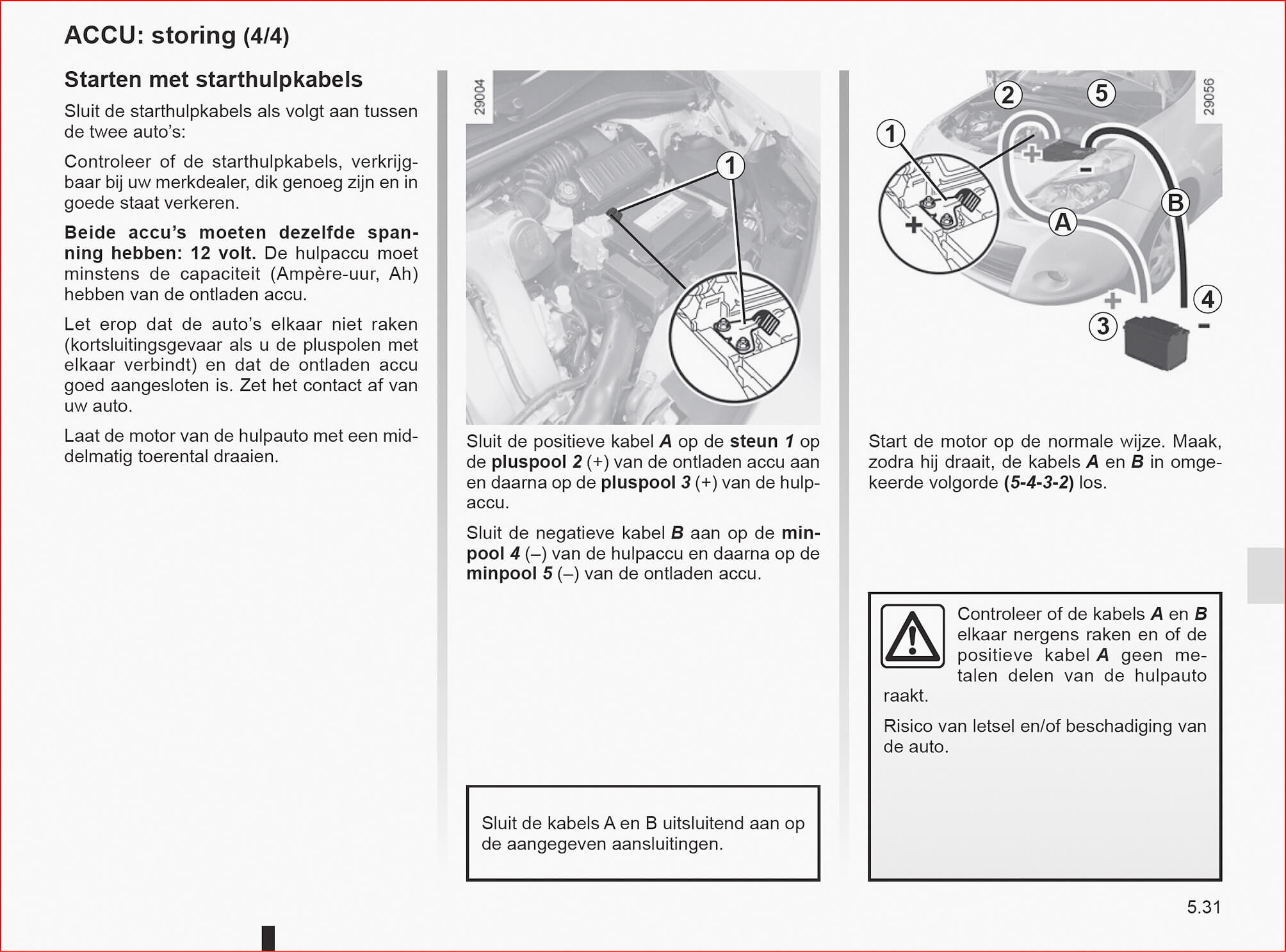
For about an hour, he has been saying ‘owl’ at regular intervals. A cartoon character he picked up somewhere and is now fantasizing about, I guess. Or a Disney reference in one of the songs that have been playing on repeat all day, in the car, driving home from holidays.
50 kilometers further, I recognize the birds in the high-voltage pylons along the highway.
According to the amateur experts at hoogspanningsforum.com, these French pylons – used for conducting electricity from 63kV to 400kV – are nicknamed ‘chats’: the wiring can be interpreted as feline whiskers.
Some genera of owls, such as the Megascops or Screech owls, have whiskers.
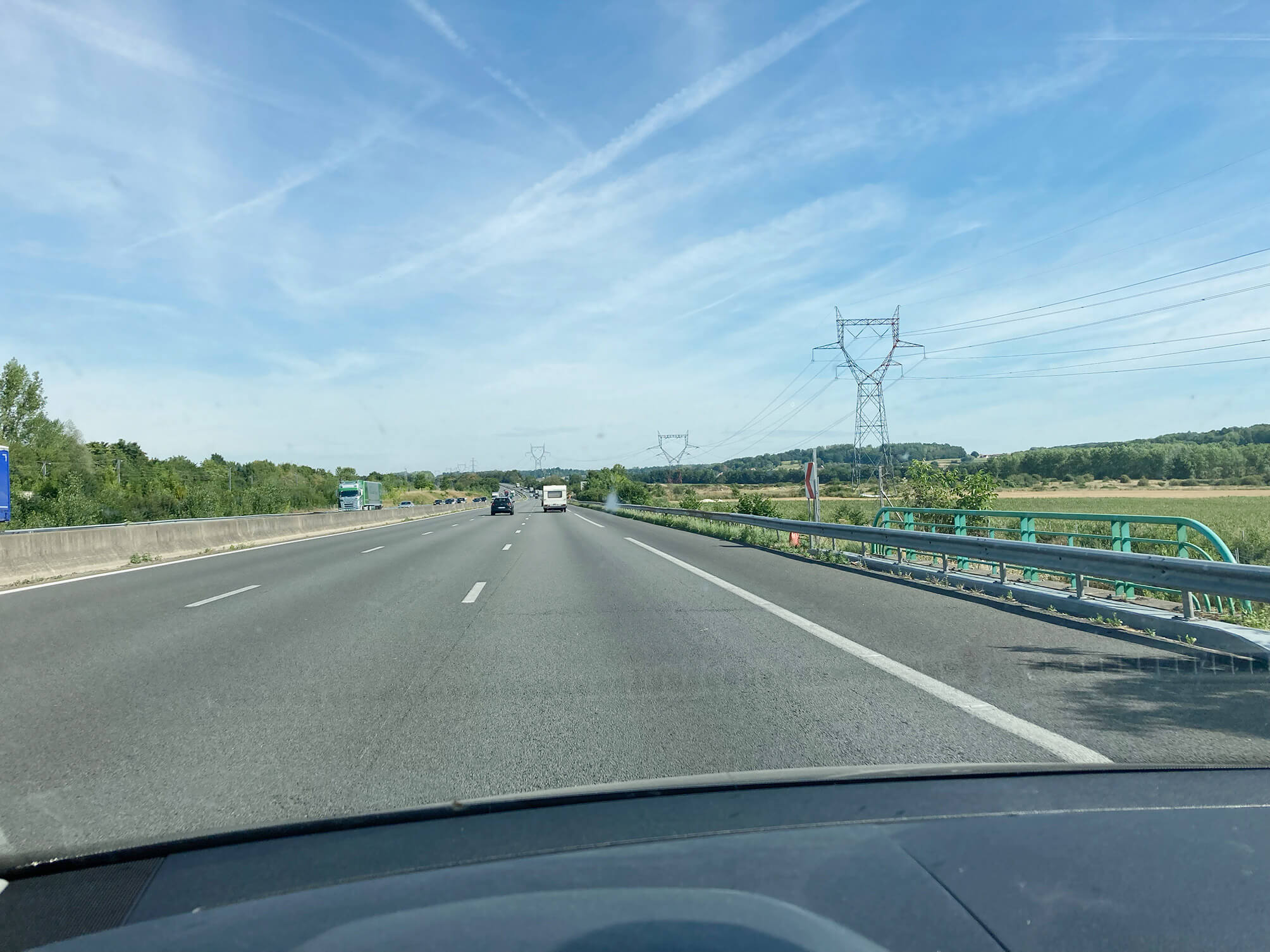
While I was sitting in the laundromat one evening waiting for my laundry to finish its cycle, La Isla Bonita by Madonna came on the radio. Competing with the rustle of seven rotating laundry machines, the song reminded me of a T-shirt that was now being washed.
The short phrase in the song’s lyrics ‘last night I dreamt of San Pedro’ would nestle itself somewhere in the back of my head and bubble up every now and again for no particular reason. I made this shirt for the occasion of Valentine’s Day in 2019 to commemorate my friendship with Jan-Pieter. I remember once mumbling the lyrics to La Isla Bonita, replacing ‘San Pedro’ for ‘Juan Pedro’, forgetting it for some time and then a while later printing it on a T-shirt.
Tjobo Kho is a graphic designer and publisher based in Amsterdam. Since 2017 part of the floating collective and publishing platform OUTLINE, and recently started his own publishing house no kiss?.
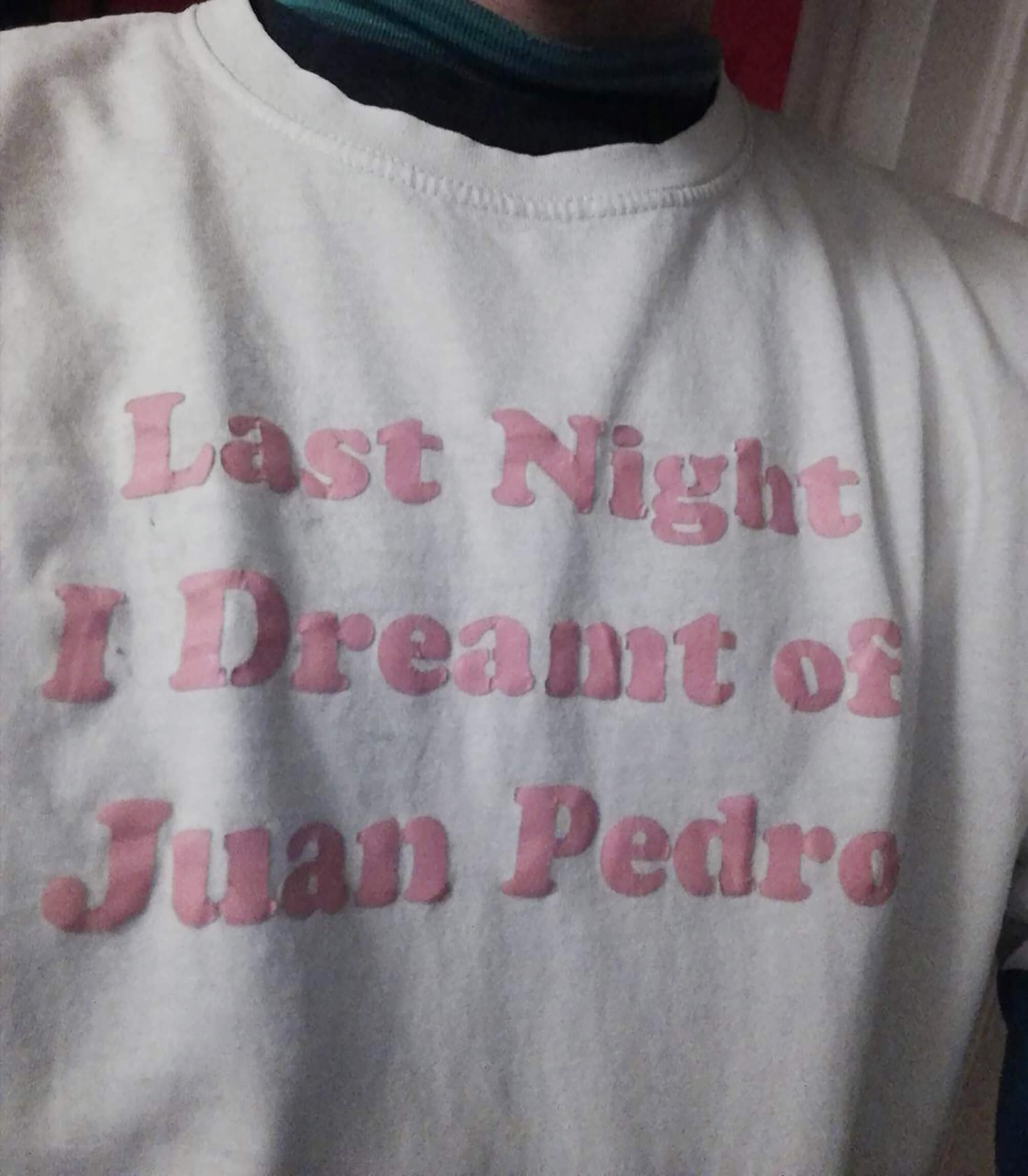
K. says that the stall where he usually buys fruit has already been packed up. But he is not worried about the quality of the fruit the other vendor sells. He gestures encouragingly.
Five signs of type-1, eleven of type-2 and two of type-3 are visible. Four of type-2 (two visible, two deduced) and two of type-3 retain two vehicles.



Márk Redele pursues projects that fundamentally relate to architecture and its practice but rarely look like architecture. www.markredele.com

While I was sitting in the laundromat one evening waiting for my laundry to finish its cycle, La Isla Bonita by Madonna came on the radio. Competing with the rustle of seven rotating laundry machines, the song reminded me of a T-shirt that was now being washed.
The short phrase in the song’s lyrics ‘last night I dreamt of San Pedro’ would nestle itself somewhere in the back of my head and bubble up every now and again for no particular reason. I made this shirt for the occasion of Valentine’s Day in 2019 to commemorate my friendship with Jan-Pieter. I remember once mumbling the lyrics to La Isla Bonita, replacing ‘San Pedro’ for ‘Juan Pedro’, forgetting it for some time and then a while later printing it on a T-shirt.
Tjobo Kho is a graphic designer and publisher based in Amsterdam. Since 2017 part of the floating collective and publishing platform OUTLINE, and recently started his own publishing house no kiss?.

At the end of the day, riding home after work, I find a text on my hand:
C
D[…]ers
Desk
K
Communication book
‘Diapers’, I recall, and stop at the shop to buy them. Sweat, dust, and manic hand rubbing have rendered parts of the writing illegible. ‘C’ is for Carl, whose newborn I need to visit as soon as possible. Sometimes, I can’t remember what the initial stands for. I don’t have any friends with names beginning with a K (who have newborns I need to visit).
The right hand writes, the left hand serves as the canvas. The back of the right hand, folded around the pen, is blank and tells the always already written on back of the left hand, whose palm never holds a pen, what to register. Right: an author. Left: a poem, sunken into the pores.
Back home, I trace ‘Desk’ again, as not to forget to clean it tomorrow.
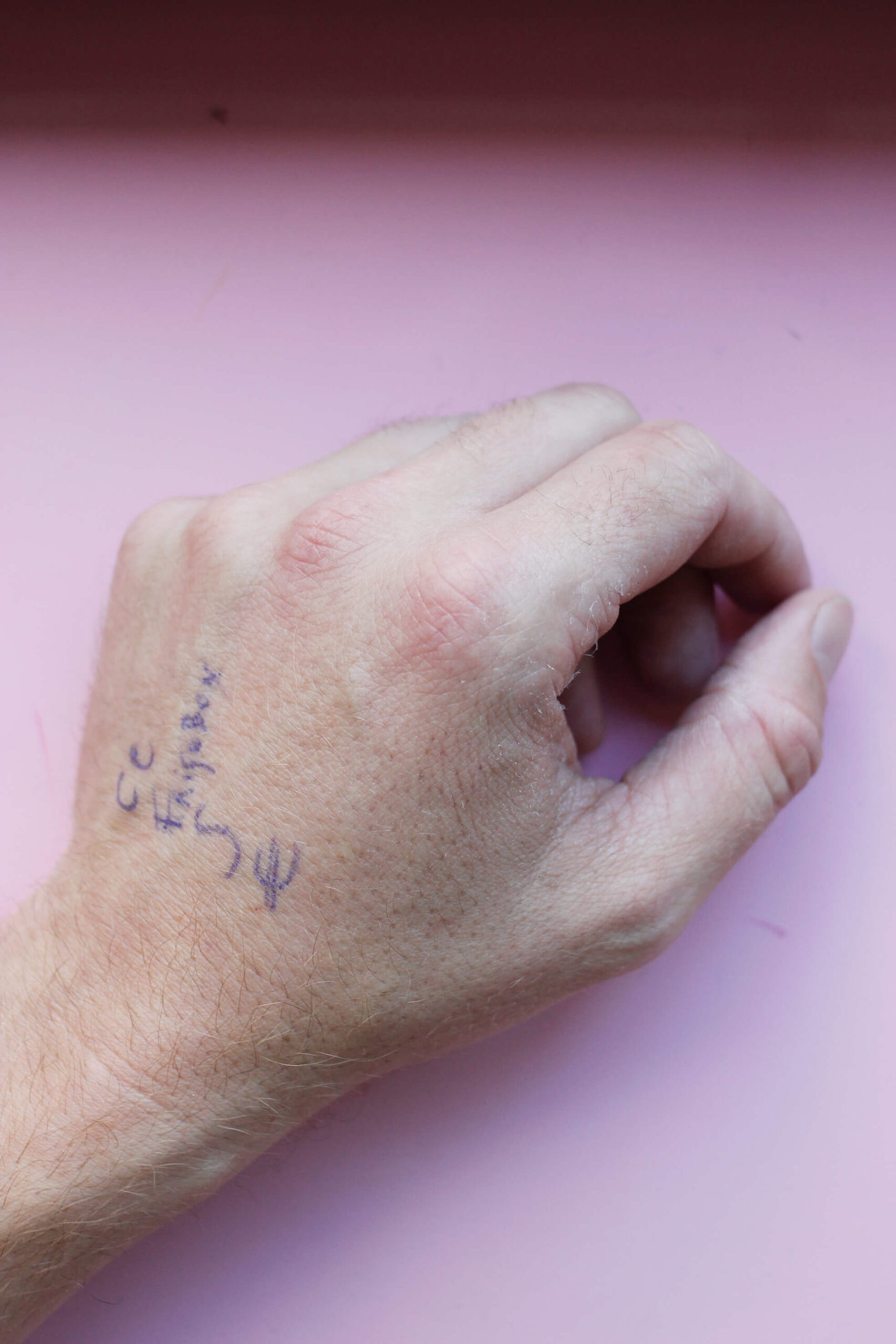

Depending on the perspective one chooses to look at the address, the house is adorned or not. The perspective from the main road is an image made in August 2020, the website (Google Maps) says. Our car is in front of the garage. It must be the end of August. We drive home from the hospital with the newborn, who doesn’t stop crying. Maybe I tightened the belts in the car seat too much. Arriving at our house, we see the slogans and decorations friends have hung at our front door. On the sill of the neighbour’s first floor window, there’s a brick that must have fallen from the second floor facade.
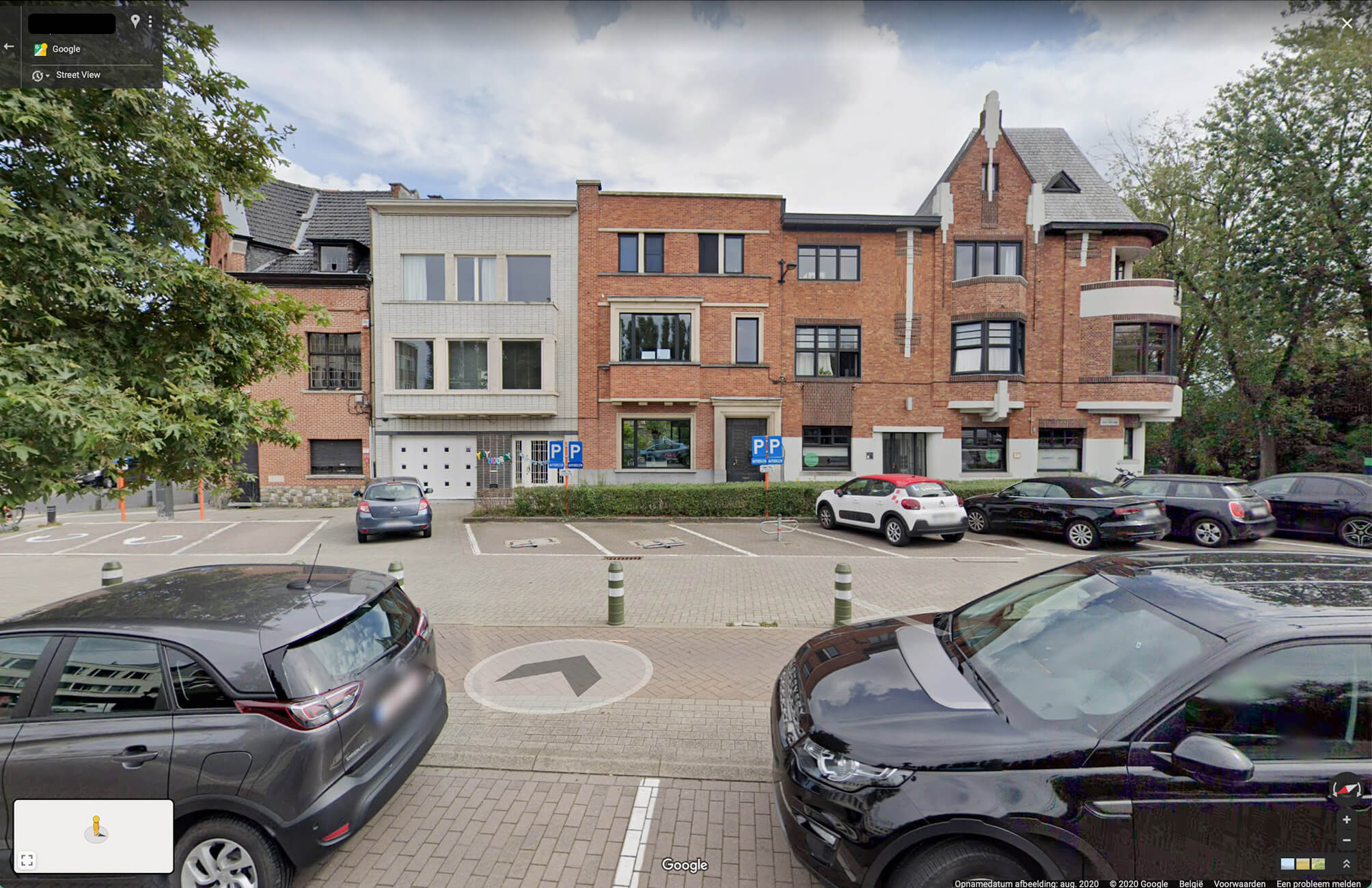
‘The masons in training pour a concrete slab and build four walls upon it in a stretcher bond. Then the block comes to our department and the students in the course Electrical installer (residential) can grind channels and drill cavities in it.’
[…]
‘It’s not always a success from the outset, but they learn quickly.’
[…]
‘Never grind horizontally, always vertically. Diagonally if there is no other way.’
[…]
‘Two fingers wide.’
[…]
‘After this it goes to the sanitary department. After the bell drilling, the demolition hammer follows and the masons make us a new block.’
Competentiecentrum VDAB, Wondelgem, July 2019.
First published in A+ Architecture in Belgium, A+ 279, Schools (August, September 2019), https://www.a-plus.be/nl/tijdschrift/schools
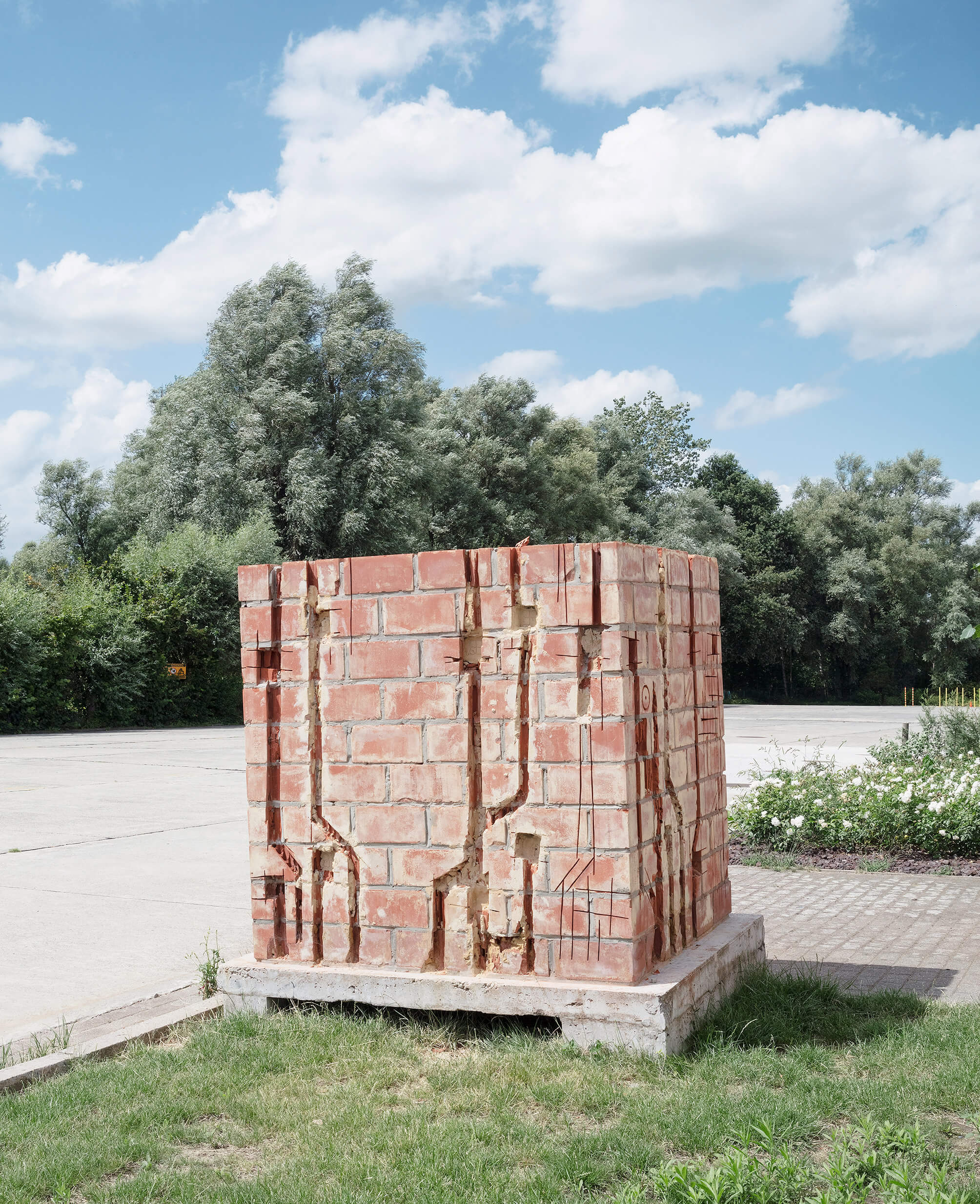
This video-still is taken from a documentary about ‘Le Coin du Balai – De Bezemhoek’, a Brussels neighborhood on the edge of the Sonian Wood. Historically, the inhabitants had the exclusive right to harvest young shoots of trees to make and sell brooms. In 1976, filmmaker Willy Biesemans captured the last broom-maker, still in possession of this vernacular knowledge.
Nowadays, the Sonian Wood is commonly understood as a place of natural beauty surrounding the city. The wood the forest produces is managed as a chain of production and sold in public auction to the best buyer. The bulk of the forest’s produce is exported abroad and eventually imported back as manufactured goods.
Clementine Vaultier’s interests, although trained as a ceramist, are in the warm surroundings of the fire rather than the production it engenders.
Biesemans, W. De Bezemhoek. 1976 (YouTube – De Bezemhoek)
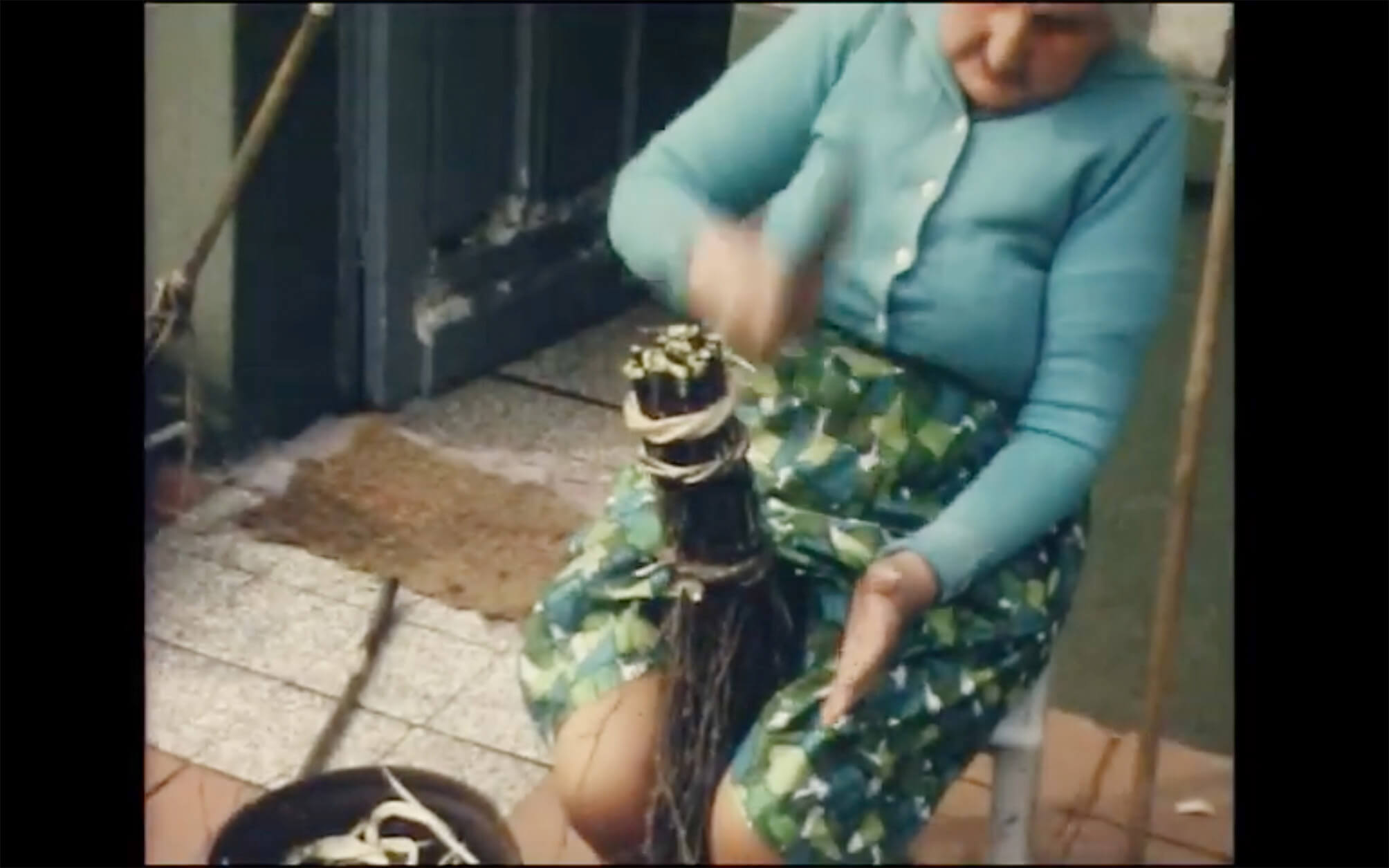
When the juneberry (Amelanchier Lamarckii) flowers, the beekeeper knows it’s time to add a first honey super to the hive. Winter’s over and worker-foraging bees will fly out and come back with their stomachs full of nectar. To avoid larvae in the honey, the beekeeper will place a grid – the so-called queen excluder – between the main compartment of the hive and the honey super.

This video-still is taken from a documentary about ‘Le Coin du Balai – De Bezemhoek’, a Brussels neighborhood on the edge of the Sonian Wood. Historically, the inhabitants had the exclusive right to harvest young shoots of trees to make and sell brooms. In 1976, filmmaker Willy Biesemans captured the last broom-maker, still in possession of this vernacular knowledge.
Nowadays, the Sonian Wood is commonly understood as a place of natural beauty surrounding the city. The wood the forest produces is managed as a chain of production and sold in public auction to the best buyer. The bulk of the forest’s produce is exported abroad and eventually imported back as manufactured goods.
Clementine Vaultier’s interests, although trained as a ceramist, are in the warm surroundings of the fire rather than the production it engenders.
Biesemans, W. De Bezemhoek. 1976 (YouTube – De Bezemhoek)

‘The saw cuts are sloppy and appear to be made in a haste.1 The cuts are situated at a height of approximately seventy centimetres from the ground. The hill’s protected woods have seen an increase in these scattered traces of illegal logging since a rise in tax on heating fuel in October 2012. Many Greeks set about logging illegally in protected woods, mostly in the colder North of the country, but also here in Egaleo, a western suburb of Athens.’
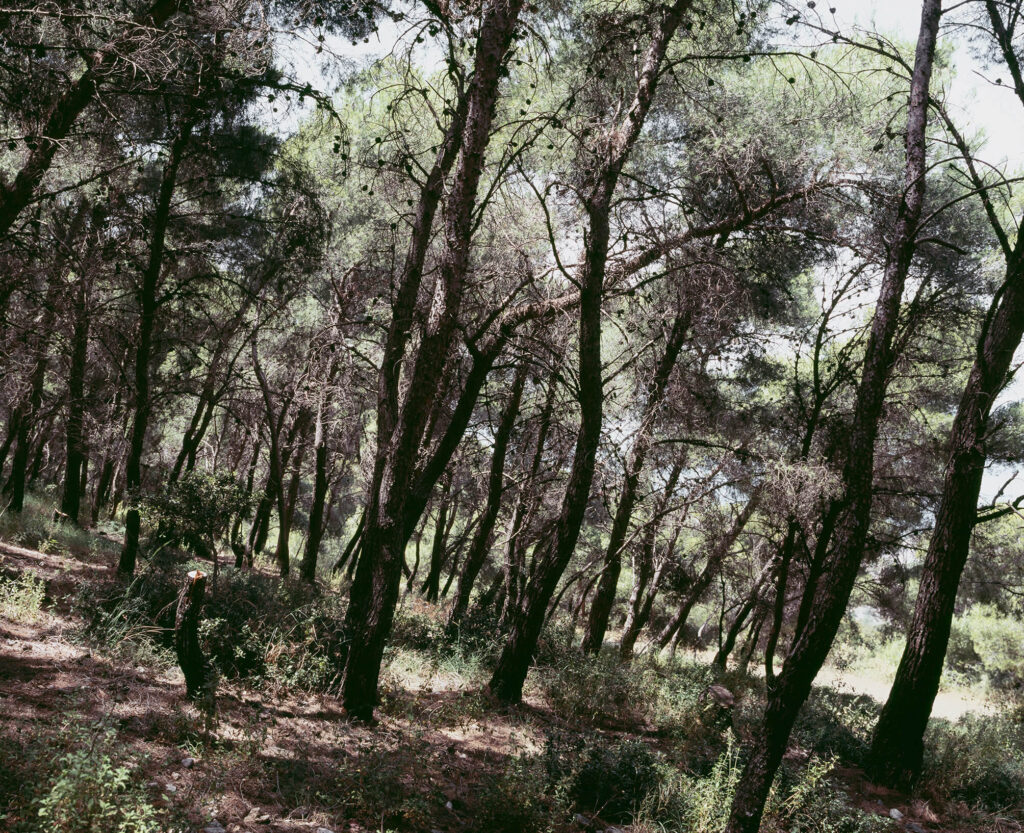
First published in: De Cleene, M. Reference Guide. Amsterdam: Roma Publications, 2019
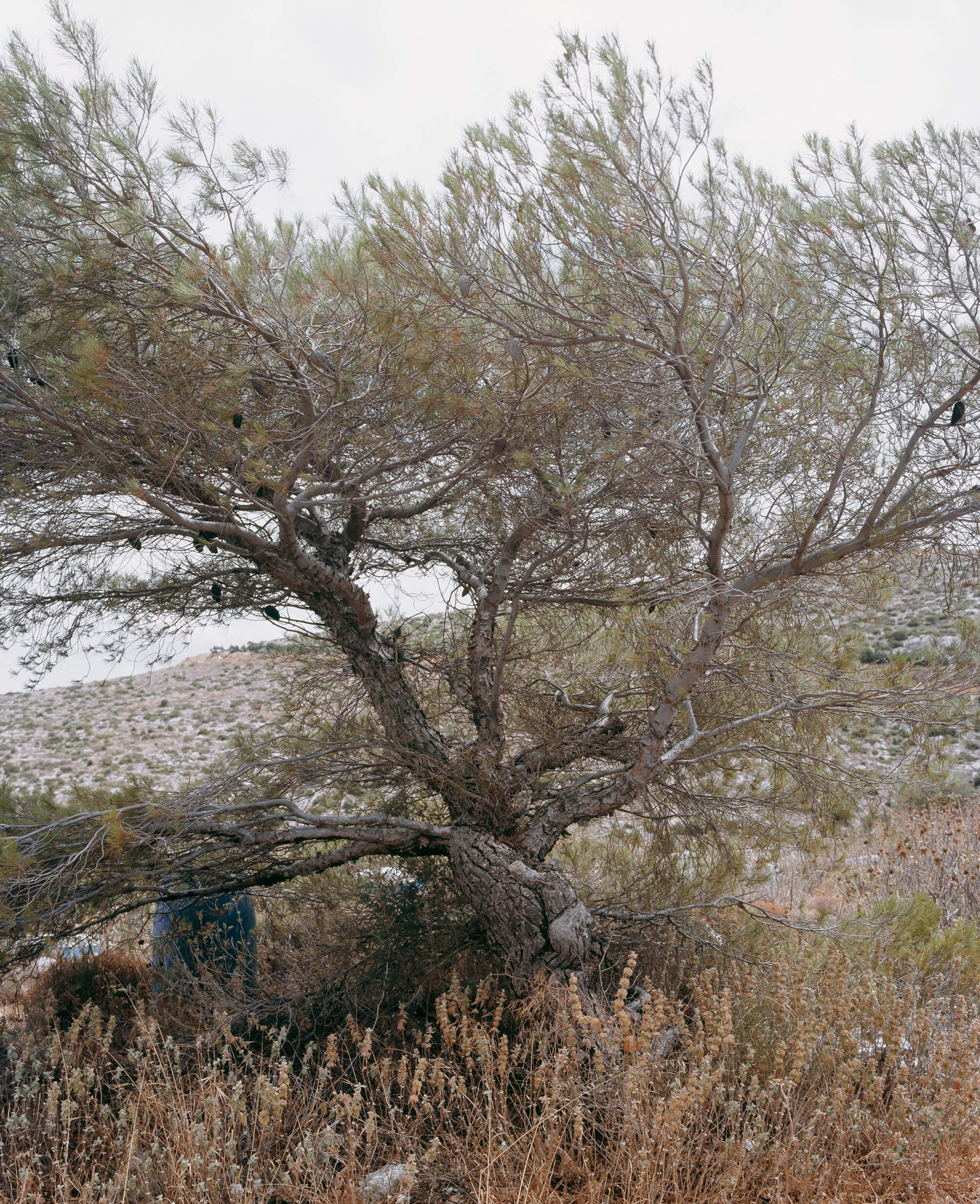
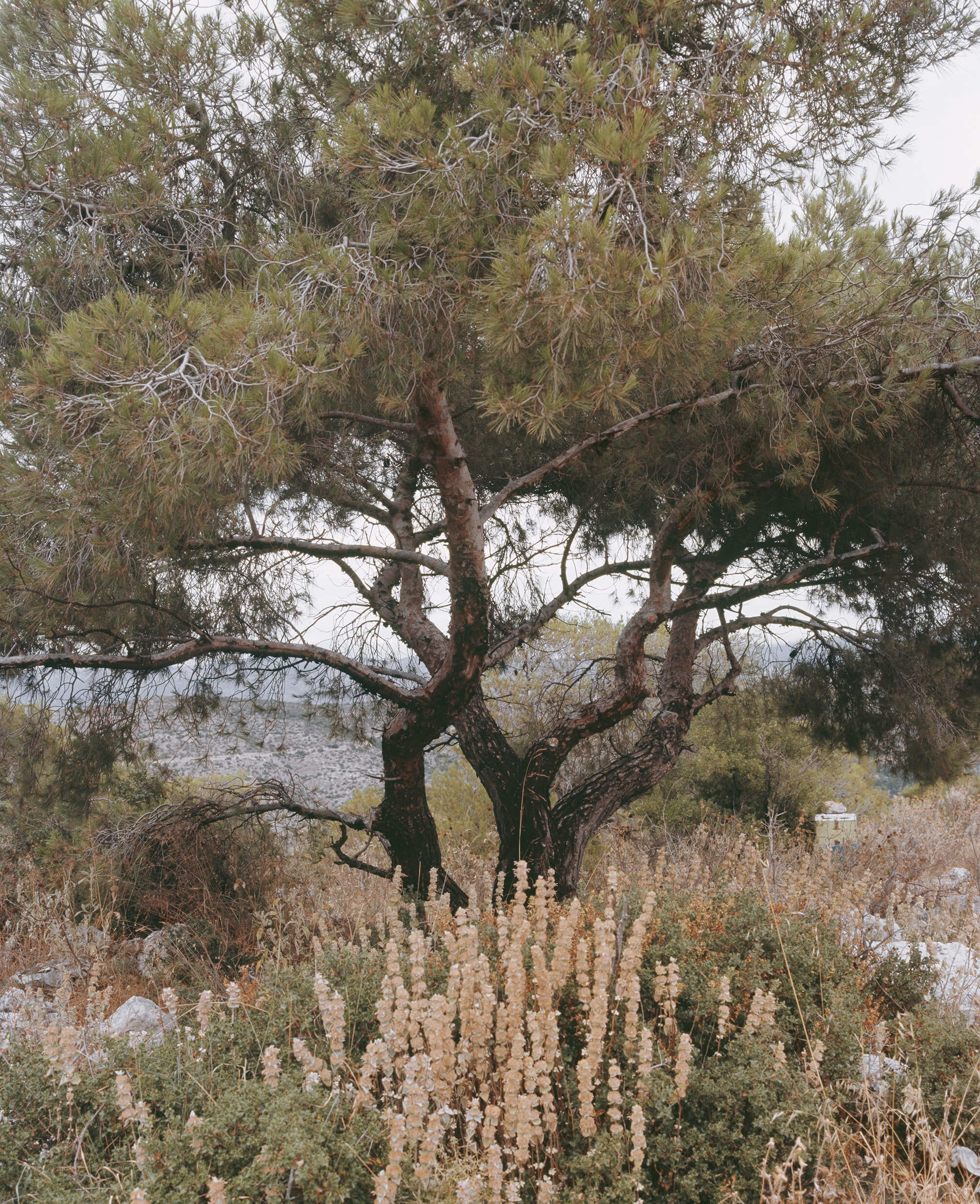
Seven very similar and rudimentary buildings take in a trapezoid plot of land in Gilly. They are located between the school on the Rue Circulaire and the houses along the Rue de l’Abbaye. The structures are built of orange brick, concrete structural elements, whitish steel gates and roofing. Every garage has its own number, hand-painted in white on the concrete lintel above each gate. In summer the roofing gets hot and soft.
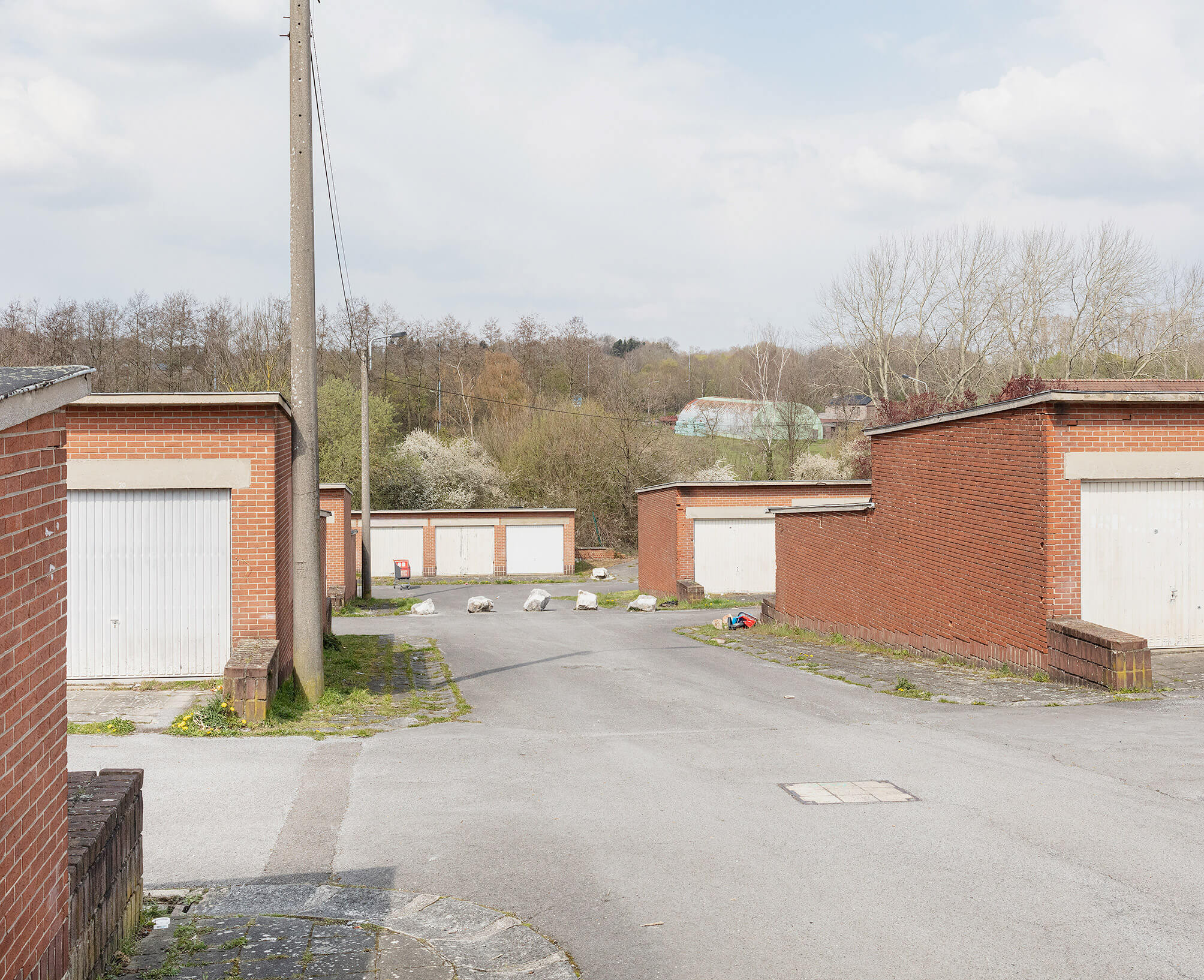
Five white boulders close off a shortcut for motorists who attempt to cut the bend in the road. The southernmost roof’s pitch runs opposite to the landscape’s slope. The lower roofline is, therefore, only about one meter above a small, triangular patch of grass which is hidden from view by a hedge. In summer, when the roofing gets hot and soft, text and drawings get pressed or carved into it.
Google Earth
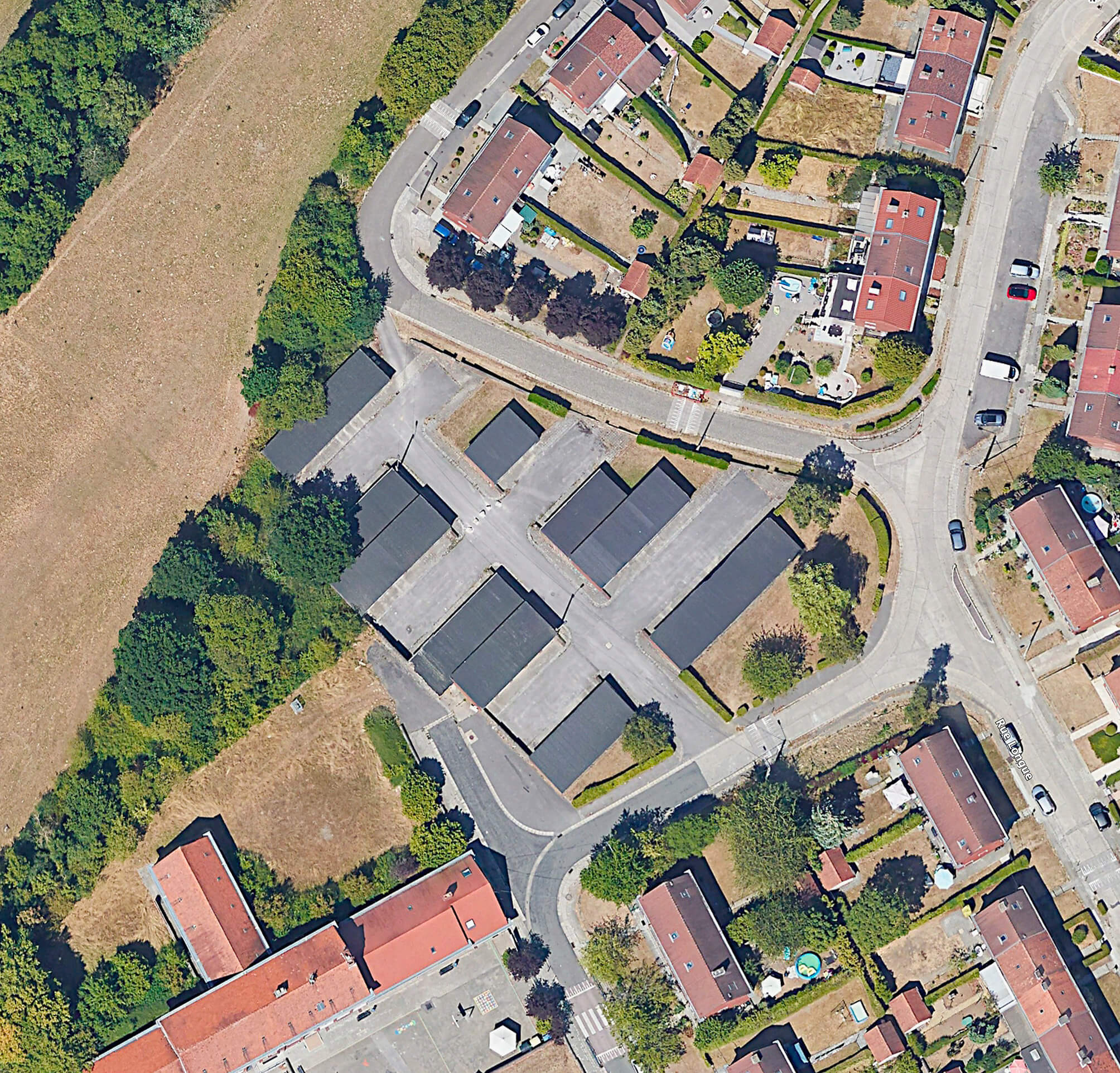
How slanted is this saddle? Anyone looking at the full photo of this Sparta K-10 might think that the street fence is pushing its saddle down at an angle. However, the bike and its saddle are leaning against the fence, they are not pushed under it. Whether the saddle is as slanted as the photo suggests, we are not sure. This detail of the photo suggests otherwise. The rail to which the saddle is attached is already mounted slightly less slanted than the line of the fence behind which the saddle is partly hidden, and above that part of the fence something vaguely protrudes from the back of the saddle. Presumably that is the edge of the saddle, which would reassure us about the cyclist’s comfort.
Lars Kwakkenbos lives and works in Brussels and Ghent (B). He teaches at KASK & Conservatorium in Ghent, where he is currently working on the research project ‘On Instructing Photography’ (2023-2024), together with Michiel and Arnout De Cleene.
